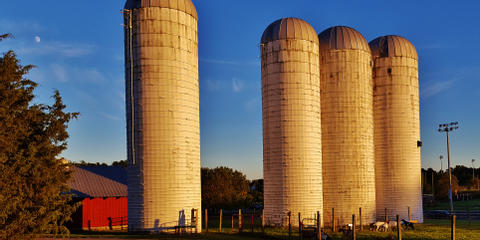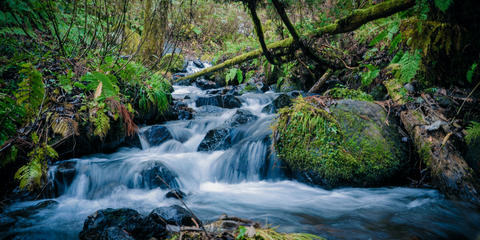Federal funding programs are under review as of 1/27/25. We'll make updates as new info is released.
The** **EWP Program offers technical and financial assistance to help local communities relieve imminent threats to life and property caused by floods, fires, windstorms and other natural disasters that impair a watershed. EWP does not require a disaster declaration by federal or state government officials for program assistance to begin. The NRCS State Conservationist can declare a local watershed emergency and initiate EWP program assistance in cooperation with an eligible sponsor (see the Eligibility section below). NRCS will not provide funding for activities undertaken by a sponsor prior to the signing of a cooperative agreement between NRCS and the sponsor.
NRCS offers financial and technical assistance for various activities under the EWP Program, including:
-
Remove debris from stream channels, road culverts and bridges;
-
reshape and protect eroded streambanks;
-
correct damaged or destroyed drainage facilities;
-
establish vegetative cover on critically eroding lands;
-
repair levees and structures;
-
repair certain conservation practices, and
-
purchase of EWP Buyouts.
Eligibility
Recovery Projects
Recovery projects begin with a local sponsor or legal subdivision of state or tribal government. Eligible sponsors include cities, counties, towns, conservation districts, or any federally-recognized Native American tribe or tribal organization. Interested public and private landowners must work through a sponsor.
In some situations, landowners can directly apply for assistance through a floodplain easement at the local NRCS office when project funding for floodplain easements becomes available. States will hold a signup period for the impacted communities and the local NRCS offices will publicize that information in the affected communities.
Terms
All EWP projects must have a sponsor and demonstrate that they reduce threats to life and property; be economically, environmentally and socially sound; and must be designed to acceptable engineering standards.
NRCS partners with diverse sponsors to complete EWP Program projects. Sponsors include cities, counties, towns, conservation districts, or any federally-recognized Native American tribe or tribal organization.
Sponsors can apply for EWP Program assistance directly to NRCS while public and private landowners can apply for this assistance through a local sponsor.
Check out the EWP Sponsor Resource page for more information.
Application Instructions
To learn more about NRCS’s EWP Program, please contact your state's EWP Program Manager.
Resources
Related Programs

Farm Storage Facility Loan Program (FSFL)
Farm Service Agency
- Loan
- Infrastructure
- Equipment
- Storage
- Lighting
- Delivery Vehicle
- National
- Oilseeds
- Peanuts
- Pulse Crops
- Hay
- Honey
- Biomass
- Fruits
- Vegetables
- Floriculture
- Hops
- Maple Sap
- Milk
- Cheese
- Yogurt
- Butter
- Eggs
- Rye
- Aquaculture
- Poultry
- Livestock
- Grains

A Climate-Smart Strategy for the Michigan Foodshed
Star of the West Milling Company, U.S. Department of Agriculture
- Grant
- Climate-Smart
- Beginning Farmers
- Women
- MI
- Wheat
- Dried Beans
- Soybeans

A Comprehensive Evaluation of the Impact of Industrial Hemp and Soil Microalgae Consortium as High-Efficiency Carbon Sequestration Model Plants
Florida A&M University, U.S. Department of Agriculture
- Grant
- Climate-Smart
- AL
- FL
- LA
- Hemp

A Multi-Faceted Approach to Incentivizing Woody Perennial Growers to Establish Cover Crops in Orchards in Four Diverse Regions of the United States
Agoro Carbon Alliance US, U.S. Department of Agriculture
- Grant
- Climate-Smart
- CA
- WA
- OR
- MI
- FL
- Fruits
- Tree Nuts
Details
Organization
Financial Instrument
Cost Share, Grant
Updated October 27, 2025
Image Credit: Leo Rivas
This information was gathered from public sources. Ambrook is not responsible for or able to affect the results of any financial programs listed, nor are they responsible for any incorrect information that is listed or is on the hyperlinked external sites. All information is subject to change.
Explore hundreds more programs on Ambrook.
